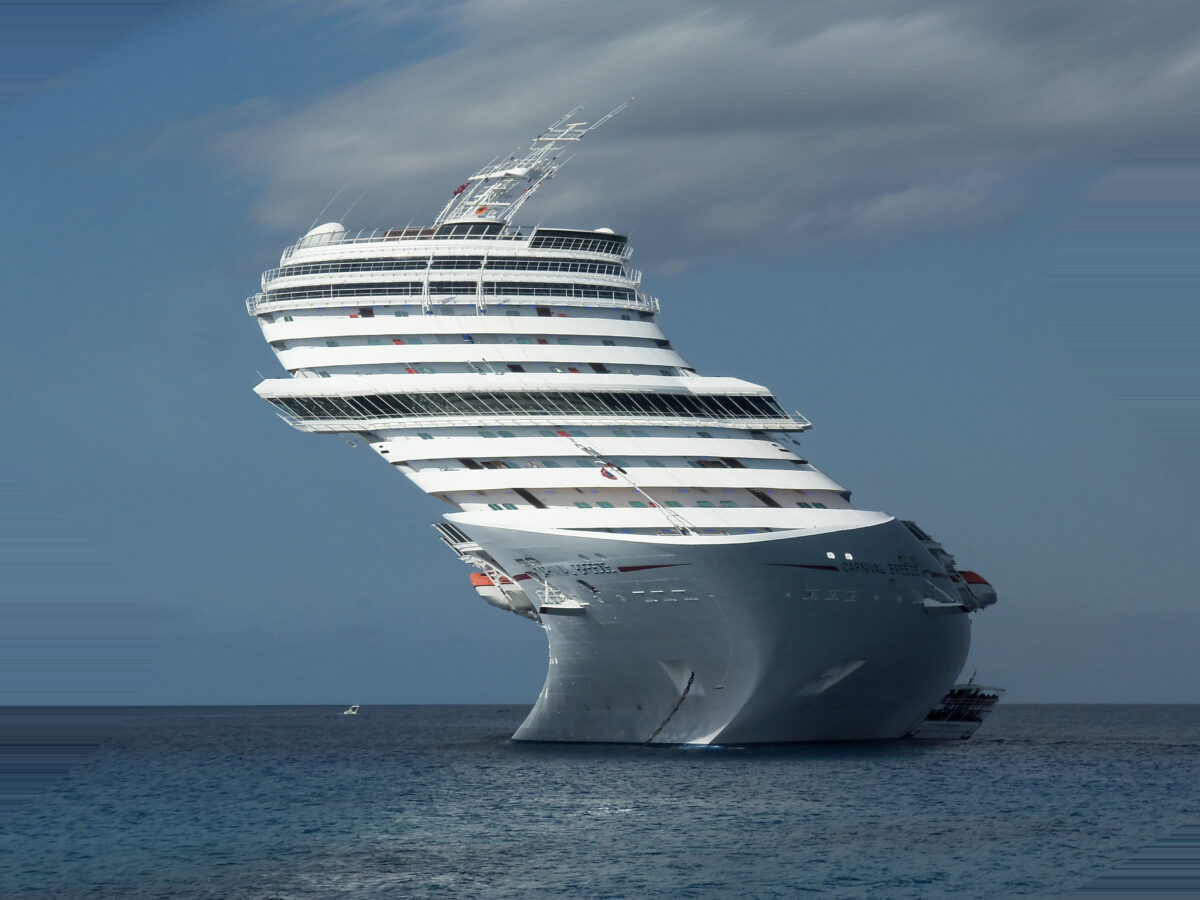Seasickness, otherwise known as motion sickness, can end the enjoyment of your cruise quicker than you might think. For some cruisers, even the slightest motion of the ship can bring on the undesirable symptoms of seasickness.
Malaise, nausea, vomit, and headaches are never positively associated with a cruise, but can be the symptoms of seasickness. Luckily, there a few different methods in combating the motion of the ocean.
Sea-Bands
Odds are you will see at least one fellow passenger wearing the “silly black bands” during your sailing, but they are far from silly. In recent years, Sea-Bands have become one of (if not) the most popular remedies for seasickness. Made popular by their simple nature and lack of medication, these bands help alleviate motion sickness and vomiting through acupressure in the wrists. While you may find a red mark on your wrist from the bands, you will not be finding yourself in the ship’s medical center anytime soon. So, when the waves get a little rough, slap on your bands and head on down to your shuffle board game on the promenade deck.
Dramamine
If your not a fan of drug free remedies, Dramamine is the solution for you. Dramamine is an over the counter, fast acting medication that helps alleviate motion sickness and vomiting. Cruisers can find this seasickness remedy in both tablet and liquid form with specific dosages for adults and children.
Scopolamine
One of the classic seasickness remedies, “that patch behind the ear,” formally known as Scopolamine, is one of the most popular medications used to treat seasickness. Passengers need only to wear a small patch behind the ear, which releases small dosages of medication into the skin. The small doses of medication ultimately interfere with the communication between the nerves and area of the brain that controls vomiting.
Additional Remedies
Throughout the history of sailing, mariners have found many unique and questionable ways to treat seasickness. While many may be less effective, many have been proven to reduce the symptoms felt by sailors in rough seas. Passengers looking for additional methods can try:
- Eating green apples.
- Eating saltine crackers.
- Drinking soft drinks, such as Coke, Pepsi, or Ginger Ale.
- Chewing on ginger.
- Breathing fresh air on deck.
- Setting your sights on the horizon.
- Undergoing acupuncture therapy in the ship’s spa.
- Take a nap, lie down, or sit still in a comfortable chair.
- Manually extending the ship’s stabilizers. (Okay, maybe not this one.)
Medical disclaimer: We here at Cruise Currents are far from what any normal person may call a “medical expert.” None of our staff has ever attended what is referred to as “medical school,” nor do any plan on doing so in the foreseeable future. Therefore, we advise you to consult with your real medical expert prior to using any of the aforementioned seasickness medication.

2 replies on “The Motion Of The Ocean: Battling Seasickness”
Anyone ever tried the Sea Band? I’ve used the patch with success and recently went to Bonine only when I need it. Seems to be working. Just a little hesitant to go to a wrist band method.
Love the sea band, used it after getting sick on first cruise, used it on 5 cruises, even worked on my dizziness from ear infection. Used to go in circles for 2 days with the infection, put on the sea bands and took away the dizziness within 5 minutes. I now put one on when I get on the plane to the cruise and take it off when I get home. Tried the dramamine when I first got sea sick, that put me out for a day and felt awful. The only comments I ever got was” Oh you use them too, wouldn’t go with out them” Enjoy your next cruise.